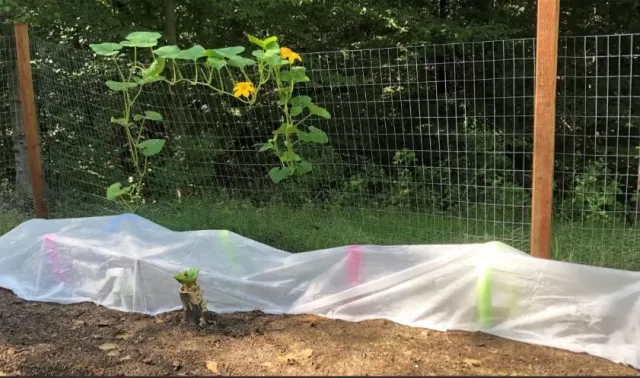Japanese Beetle Control: Effective Garden Strategies. When the threat of Japanese beetles looms over your garden paradise, fear not! Protecting your precious roses, trees, and berry bushes need not involve harsh chemical interventions.
Embrace the art of natural pest control and maintain the delicate balance of your outdoor haven with these gentle yet effective strategies.By embracing these eco-friendly techniques, you can reclaim your garden’s splendor and protect its inhabitants while maintaining the delicate harmony of nature. Japanese beetles may be persistent, but your commitment to gentle stewardship will ensure that your garden thrives, free from the need for harsh chemical interventions.
Create Your Own DIY Japanese Beetle Repellent: An Effective Home Solution

Crafting a homemade spray to combat Japanese beetles is both easy and efficient.
By blending water with a touch of Dish Soap, you can effectively suffocate these troublesome insects. Gather a simple bucket and combine a quart of water with just a teaspoon of dish soap.
Once the mixture is perfectly blended, the most practical approach is to transfer the soapy solution into a convenient spray bottle. With this DIY repellent in hand, you can target the Japanese beetles infesting your precious plants.
Upon applying the Soapy Water spray onto the beetles residing on your affected plants, a fascinating chain of events unfolds.
The solution’s action prompts the beetles to lose their grip on the foliage, causing them to tumble down. This unexpected fall from their feeding grounds could potentially offer a feast for opportunistic predators, such as birds, who naturally maintain a delicate balance in your garden’s ecosystem.
Incorporate this environmentally friendly strategy into your gardening routine, and watch as your homemade Japanese beetle spray helps defend your plants while contributing to the intricate web of life in your outdoor space.
Manual Japanese Beetle Removal: A Hands-On Approach to Beetle Control
Engaging in a tactile battle with Japanese beetles proves to be an uncomplicated yet effective strategy.
These sluggish insects lack swiftness and do not possess any biting or pinching capabilities, granting you the opportunity to address the issue manually. With a straightforward approach, you can take charge and minimize their impact simply by using your hands (and optionally donning delicate gardening gloves for added comfort). .
Feel empowered as you embark on your pest-control mission, gently plucking the bothersome Japanese beetles from your plants.
Employing a combination of dexterity and care, you can easily pick these intruders one by one. To ensure their ultimate demise and prevent any further mischief, it’s advisable to deposit each collected beetle into a receptacle brimming with your prepared water-soap concoction.
Incorporating this method into your pest management routine not only provides a direct solution but also grants you an intimate connection with your garden.
By personally engaging in this hands-on endeavor, you contribute to the well-being of your plants while fostering a deeper appreciation for the delicate balance of nature within your own outdoor sanctuary.
Utilize Neem Oil to Safeguard Your Plants from Japanese Beetles

Employing neem oil presents a proactive and non-toxic solution to thwart the progression of Japanese beetles into adulthood.
With its natural properties, neem oil serves as a powerful tool in your arsenal, effectively deterring these pests and safeguarding your cherished plants.
The process is ingeniously simple yet incredibly effective: By administering neem oil to your affected plants, you disrupt the life cycle of Japanese beetles at a critical juncture.
As male beetles encounter the neem oil, its effects extend beyond immediate contact. Upon ingestion, these male beetles unwittingly introduce the oil into their reproductive cycle, ensuring that the transmitted neem-infused essence reaches the eggs.
Consequently, the subsequent emergence of Japanese beetle larvae is thwarted, preventing their progression into the troublesome adult stage.
Embrace this ecologically friendly approach as a preemptive strike against Japanese beetles, curbing their population growth and safeguarding the vitality of your garden.
By deploying neem oil before the beetles mature, you empower your plants with a natural defense mechanism that disrupts their life cycle and curtails their potential to cause harm.
Strategic Placement of Beetle Traps for Effective Japanese Beetle Control
Harness the power of beetle traps to effectively mitigate the escalation of a Japanese beetle infestation.
Employing these traps provides a tactical advantage in impeding the proliferation of these pests and offers a comprehensive approach to pest management.
The underlying principle of beetle traps is ingeniously simple yet remarkably efficient.
These devices operate by exploiting the beetles’ natural behaviors and instincts. A Key component of their success lies in their ability to divert male beetles away from the areas afflicted by infestation, effectively disrupting their mating cycle.
Available in a variety of designs and configurations, beetle traps are equipped with an enticing lure, often in the form of a pheromone—a chemical messenger that irresistibly beckons the insects towards the trap.
This allure draws the beetles away from your targeted plants, ultimately preventing them from mating and laying eggs in the affected areas.
Once ensnared within the trap, the fate of the beetles varies depending on the trap’s mechanism.
Some traps employ a toxicant to swiftly eliminate the captured insects, while others utilize a design that prevents escape, leading to the beetles’ demise over time. This dual approach—enticing and incapacitating—ensures a multi-faceted impact on the beetle population.
Strategically positioning these traps in proximity to the affected plants optimizes their effectiveness.
Placing the traps at a distance from the target area not only safeguards your plants but also contributes to a more comprehensive strategy for pest management. By luring and neutralizing male beetles before they have a chance to mate, you significantly disrupt their life cycle and reduce the overall impact of the infestation.
Incorporate this intelligent method into your pest control regimen, and watch as beetle traps play a pivotal role in safeguarding the health and vitality of your outdoor space.
Shield Your Plants with Row Covers: A Preemptive Defense Against Japanese Beetle Infestations

Harness the power of row covers to establish a robust barrier against the onset of Japanese beetle infestations, nipping potential problems in the bud.
These versatile protective shields offer a practical and effective means of safeguarding your plants, creating an environment that thwarts the invasion of these voracious pests while maintaining the essential conditions for growth.
The genius of row covers lies in their dual functionality—providing an impermeable shield against Japanese beetles while permitting the passage of light and moisture essential for the health of your plants.
This delicate balance ensures that your vegetation continues to thrive under the protective embrace of the cover.
To maximize the efficacy of row covers, it’s recommended to deploy them during the peak feeding periods of Japanese beetles.
This crucial timeframe generally spans from mid-June to mid-August when these insects are most active and destructive. By strategically employing row covers during this critical window, you create a formidable deterrent that disrupts the beetles’ access to their favored feeding grounds, effectively curbing their impact on your plants.
Versatility is a hallmark of row covers, as they are available in an array of sizes to accommodate various plant types.
Whether you’re seeking to shield shrubs, trees, flowers, ornamental plants, or garden vegetables, row covers can be adapted to suit your specific needs. Their adaptability renders them a valuable asset in your pest management toolkit, enabling you to tailor their usage to the unique requirements of your garden.
Embrace the proactive approach offered by row covers, and witness firsthand how this simple yet ingenious solution acts as a formidable shield, thwarting Japanese beetles and preserving the vitality of your cherished plants.
By effectively barring the entry of these invasive pests, you not only prevent potential infestations but also contribute to the flourishing health of your garden ecosystem.
*The information is for reference only.